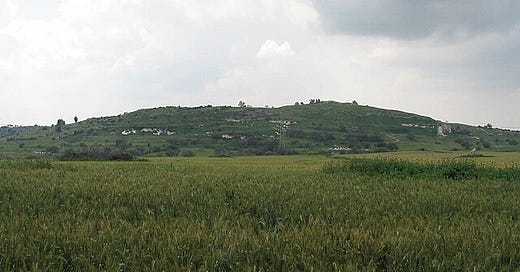For a long time, our understanding of the Philistines was based on a literal reading of biblical texts, for example David and Goliath or the story of Samson in Judges 13-16. According to this view, the Philistines were a singular ethnic group from the Aegean who came to the land and conquered the southern coastal plain - which became known as Philistia - in the early 12th century BCE. This was a time of transition between the Late Bronze and Iron Ages, the same period that the Israelites emerged.
Aren M. Maier, who directed excavations at Tell es-Safi – the Philistine city of Gath – from 1996 to 2021, explains that this view is mistaken. In a recent article in Biblical Archaeology Review, ‘Gath of the Philistines – A New View of Ancient Israel’s Archenemy,’ he reviews recent archaeological findings that have transformed our understanding of their history.
The Philistines are often associated with the ‘Sea Peoples,’ who are mentioned in Egyptian sources, for example the reliefs at Ramesses III’s mortuary temple at Medinet Habu. We now know, though, that there was not one single migration and conquest in the early 12th century BCE, but instead a series of migrations. Nor is there much evidence of destruction at the Canaanite sites that became Philistine cities, for example Gath, Ashkelon, and Ekron. Instead, we largely see continuity from the Late Bronze Age into the Iron Age, with the newcomers living alongside the Canaanites. Nor can Philistine culture be traced to a single point of origin; it instead combined Mycenaean, Minoan, Cypriot, and Anatolian cultures with local influences. For example, infant burials at Ashkelon seem to show Aegean ancestry, while remains from Gath and Tel Arani show intermarriage with Canaanites.
Keep reading with a 7-day free trial
Subscribe to Love of the Land to keep reading this post and get 7 days of free access to the full post archives.



